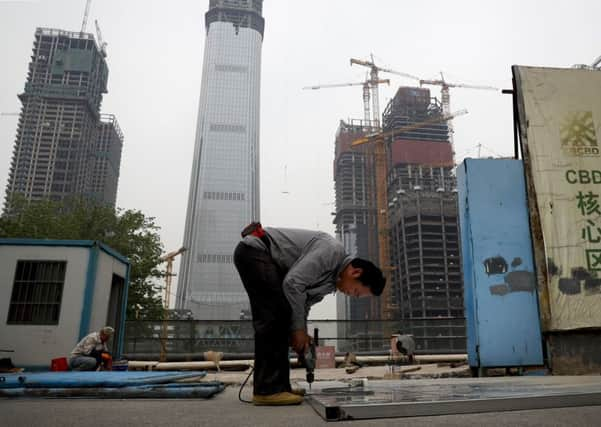China's recovery gathering pace amid property boom
This article contains affiliate links. We may earn a small commission on items purchased through this article, but that does not affect our editorial judgement.


The 6.9 per cent annual pace of expansion for the world’s second-largest economy surpassed economists’ forecasts and was an improvement from the 6.8 per cent seen in the last quarter of 2016.
Analysts said government spending and a property boom spurred by easy credit were the main factors helping to driving stronger demand.
Advertisement
Hide AdAdvertisement
Hide AdChina saw its slowest growth in nearly three decades in 2016, at 6.7 per cent. The official full-year economic growth target for 2017 is 6.5 per cent.
“Currently, China’s economy is demonstrating good signs of pick-up in growth, overall price stability, expansion in employment and improvement in the international balance of payments,” said Mao Shengyong, a spokesman for the National Bureau of Statistics.
Fears of being dragged into a trade and currency war with the US have abated after president Donald Trump toned down his previously antagonistic comments against Beijing. A summit earlier this month with Chinese President Xi Jinping ended calmly, and the US Treasury Department did not label China a currency manipulator in its latest assessment.
During the first quarter, investment in fixed assets such as factories expanded 9.2 per cent from a year earlier, while retail sales grew 10 per cent. Industrial production rose 6.8 per cent, including a stronger-than-expected 7.6 per cent year-on-year gain in March.
Although exports have also shown sharp improvement, strong lending and investment figures suggest Beijing is relying on its traditional strategy of powering growth through government stimulus. China’s leaders have been trying to shift to an approach based more on consumer demand but tend to open the spending and credit taps at times when growth appears to be slowing too much.
“The question we need to ask is whether this investment-led model is sustainable as the authorities have trouble taming credit,” said Raymond Yeung and David Qu, economists at ANZ.
Advertisement
Hide AdAdvertisement
Hide AdThe latest figures indicate China’s economy is on track to meet its official growth target – a good sign for the country’s communist leaders, who do not like surprises and are preparing for a twice-a-decade party congress in the autumn to appoint new leaders.
“The 6.5 per cent target this year, you could say it’s more important than ever, because of the political reshuffle later this year,” said Amy Zhuang, chief Asia analyst at Nordea Markets.
“At least being able to maintain the stability in growth is very, very important for Beijing.”
On a quarter-to-quarter basis, which is how other major economies report data, the economy lost steam, expanding just 1.3 per cent. That was slower than 1.7 per cent in the fourth quarter of 2016.
The economists at ANZ said such figures should be viewed cautiously because they might reflect changes in how the government made adjustments for seasonal factors.
Economists say they expect the boost from the government’s policies and the property boom to persist for a few more months before fading later in the year.
House prices will likely start cooling this year as tighter restrictions finally kick in, but Beijing will probably take steps to offset that decline with more stimulus to meet its annual growth target, Zhuang said.